Tour of Nepal and Tibet!!
Namaste!! - We Welcome You With Folded Hands!!
Breakfast at Hotel
After breakfast, visit Kathmandu Durbar Square, Ason Bazaar, Swoyambhunath Stupa and Patan Durbar Square.
Kathmandu Durbar Square: It was founded between 1069 – 1083 AD. The complex of palaces, courtyards and temples were built between 1200 and 1768 A.D. and once used to be the seat of the ancient Malla kings of Kathmandu. The main attractions are Royal Palace, Hanuman Dhoka, Taleju Temple, Kashtamandap Temple, Kumari Temple (Living Goddess) etc.
Ason Bazaar (Vegetable & Spice Market): Ason bazaar is the oldest shopping place in Kathmandu. The place has various shops where one can buy all kinds of goods, groceries, vegetables, spices, and other ingredients needed for worshiping Gods, and the ingredients needed for ritual works. The place holds the most number of shops and different customers and class people bringing a warm environment and friendly atmosphere. Ason is equally famed for its traditional and cultural lifestyle of the people.
Swoyambhunath: It is a Buddhist stupa which stands at the top of green hillock west of Kathmandu. It is believed to be over 2000 years old and was the point where Manjushree discovered the lotus of the ancient valley lake. The main attractions are big Stupa, 365 steps, Pratapur Temple, Anantapur Temple, Manjushree Temple along with numerous small chhortens.
Patan Durbar Square: The Patan Durbar Square has been acclaimed as one of the finest urban streetscapes in the world. Most of the monuments seen today were built between the 16th – 18th centuries. It is known as the centre of fine arts and for the superb craftsmanship of its artisans. Essentially a Buddhist city, historic inscriptions establish Patan as an important town as it is said to have been founded by Emperor Ashoka in the 3rd century B.C., although no historical proof exists. The main attractions are Royal Palace, Krishna Temple, Taleju Temple, Bhimsen Temple, Golden Temple (Hiranyavarna Mahabihar) etc.
Overnight at Hotel Radisson
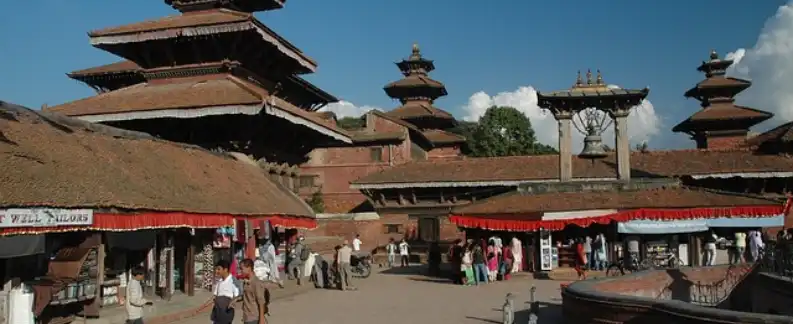
Breakfast at Hotel
After breakfast, transfer to the airport to connect the flight to Pokhara by Buddha Air Or Yeti Airlines at 0800 hrs. Upon arrival, our representative will meet, assist and transfer to the Hotel.
POKHARA
Pokhara is the second most famous city which is nestled beneath the snow-crested Annapurna massif in a tranquil valley. It is the starting point for many of Nepal’s most popular trekking destinations. Pokhara is a place of remarkable natural beauty. The serenity of many lakes, rivers and mountains have created both peaceful and adventurous ambience for all visitors. Stretching from east to west, one can observe the mountain ranges which include Annapurna I to IV and Annapurna South. Although it is Machhapuchhre which dominates all others.
Afternoon, boating on Phewa Lake and Visit Peace Pagoda
Peace Pagoda: A Peace Pagoda is a Buddhist stupa designed to provide a focus for people of all races and creeds and to help unite them in their search for world peace. It was built under the guidance of Nichidatsu Fujii (1885-1985), a Buddhist monk from Japan and founder of the Nipponzan-Myōhōji Buddhist Order. Fuji was greatly inspired by his meeting with Mahatma Gandhi in 1931 and decided to devote his life to promoting non-violence. In 1947, he began constructing Peace Pagodas as shrines to World peace all over the world.
Rest of the day is free to hang out on the lakeside.
Overnight at Temple Tree Resort
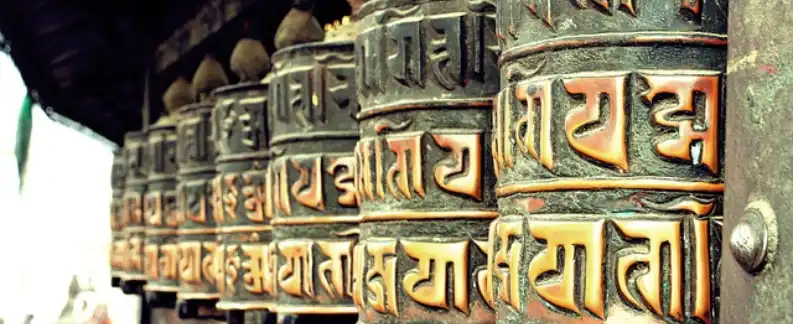
Breakfast at Hotel
Early morning, excursion to Sarangkot (to view the Himalayas close-up). Sarangkot is the viewpoint that has a close view of the spectacular panorama of the Annapurna mountain range that forms its backdrop. Extending from east to west, the Annapurna massif includes Annapurna I to IV and Annapurna South. Although the highest among them is Annapurna I (8,091 m), it is Machhapuchhre that dominates everyone else in this neighborhood.
Return to hotel for breakfast.
Afternoon, proceed for the tour of Pokhara city that includes the visits to Davis Fall, Seti Gorge, Bindhyabasi Temple, Old Bazaar, the Tibetan Refugee Camp etc.
Rest of the day is at leisure.
Overnight at Temple Tree Resort
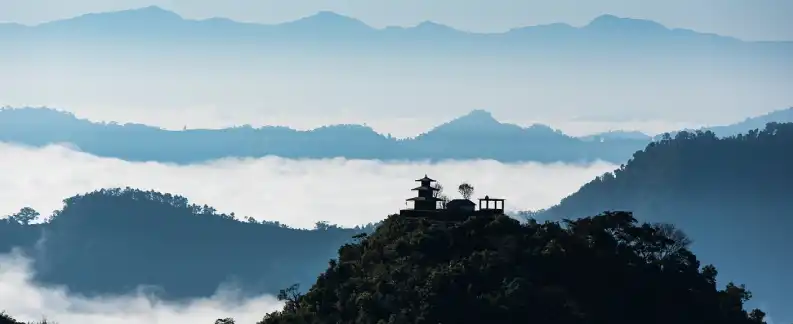
Breakfast at Hotel
After breakfast, transfer to the airport to port to connect the flight to Kathmandu by Buddha Air Or Yeti Airlines at 0830 hrs. Upon arrival, our representative will meet outside the arrival terminal building and transfer to the Hotel.
Later, visit Dakshinkali Temple, Pharping and Kirtipur.
Dakshinkali: The sinister shrine of Dakshinkali in the most spectacular of all the Kali temples. Located 20 km. from Kathmandu city in a dark valley at the confluence of two streams, Dakshinkali is renowned for its twice weekly sacrifices on Tuesdays and Saturdays. The worshipers carry their animals to the priest who will ritually decapitate them with a knife and bathe the black stone image of Kali in blood.
Pharping: Pharping is an ancient renowned village situated in Southern Region of Kathmandu. "Shikharapur" is an ancient name of Pharping village. Shikharapur was an independent Newari State when Gopaleshowr Temple was in the middle of Pharping. It is a typical Newari village and Newari culture is a model for this whole village. It was an established state at that time when Kathmandu Valley was a lake. It is said there was no existence of Kathmandu, Bhaktapur and Lalitpur. Later Goddess Manjushree cut the Chovar gorge and the water of valley flowed outside then after valley became suitable to stay. Hence, Pharping has its own ancient history, so, it is considered as a History of Village. It's also said that Great Gurus of Hinduism and Buddhism get enlightened at Pharping. It's also famous as a religious place for Buddhist pilgrims as Great Guru Padmasambhava is said to have attained enlightenment at Asura Cave, Gorakhanath and Sheshnarayan Cave at Pharping.
Kirtipur: Kirtipur is an ancient city of Nepal. It is located 5 km southwest of Kathmandu. The name Kirtipur comes from the Sanskrit terms Kirti (glory) and pur (city). The colloquial term used for the city is Kipoo. Kirtipur's history dates from 1099 A.D. It was part of the territory of Lalitpur at the time of the invasion of the Kathmandu Valley by the Gorkhali king Prithvi Narayan Shah in the 18th century. In 1768, Prithvi Narayan Shah attacked Kirtipur and annexed it to the Gorkhali kingdom. He conquered the town on his third attempt. During this war he had lost many brave commanders.
Overnight at Hotel Radisson
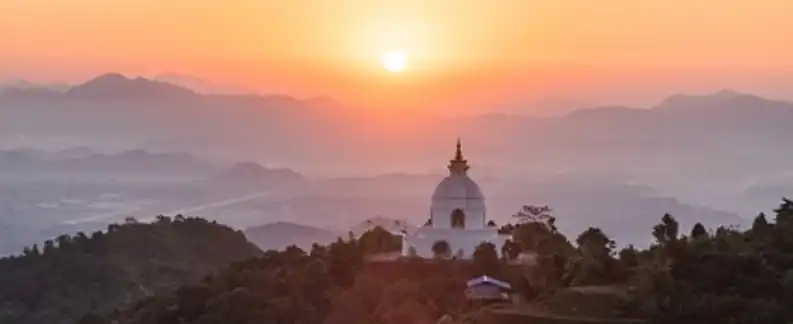
Breakfast at Hotel
After breakfast, transfer to the airport to connect flight to Lhasa by Situan Air Or Air China. After immigration formalities, you will drive for around 2 hrs to reach the third largest city of Tibet, Tsedang. After checking in at your hotel, you are advised to take rest, drink plenty of fluids and most importantly let your body get used to Tibet's high altitude. During the afternoon you can go around the hotel area for a light walk and sightseeing.
Overnight at Tsedang Hotel
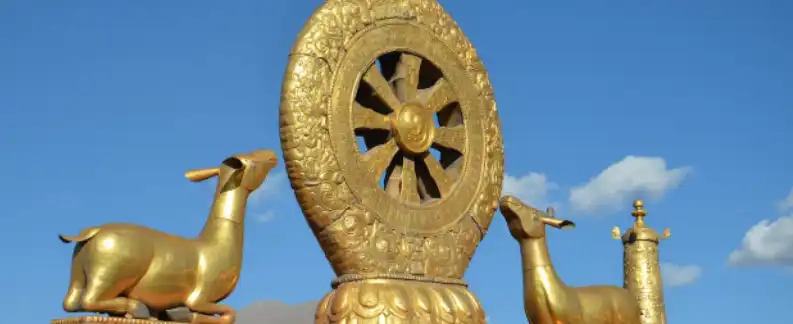
Breakfast at Hotel
After breakfast, visit Yambulakang and Samye Monastery.
Yumbulakhang Monastery: Meaning 'the palace on the leg of a female deer', located on the east bank of the Yarlong River southeast of Tsedang Town. It is located further 6 km up the Yarlung Valley a small road winds up to the left and takes you to what is regarded as the site of the oldest building in Tibet. Yumbulagang is believed by Tibetans to have been originally built by the first king of the Yarlung Dynasty Nyatri Tsenpo. This tall, dignified building rises erect on the spur of the hill, commanding view of the entire valley, Scholars believe that this building that stood on this site until the mid-sixties probably dated back to the seventh or eighth century may have been built by either Songtsen Gampo or Trisong Detsen. Tibetan murals suggest that it found its final form during the time of the Fifth Dalai Lama.
Samye Monastery: This Monastery is the First Buddhist Monastery to be built in Tibet, probably founded during the 770s under the patronage if King Trisong Detsen, with the work being directed by Padmasambhava and Shantarakshita, the two Indian masters the king had invited to Tibet to help consolidate the Buddhist faith. The monastery was designed on the plan of the Odantapuri temple in present day Bihar, Bihar and mirrored the basic structure of the universe. As described in Buddhist cosmology. The central temple represents Mt. Sumeru the mythical mountain at the centre of the cosmos. Around it are four temples called “ling” which represent the four continents (ling) situated in the vast ocean to the north, south, east, and west of Sumeru. To the right and left of each of these temples are two smaller temples called “ling-tren,” representing the subcontinents (ling-tren) of the Buddhist universe.
Overnight at Tsedang Hotel
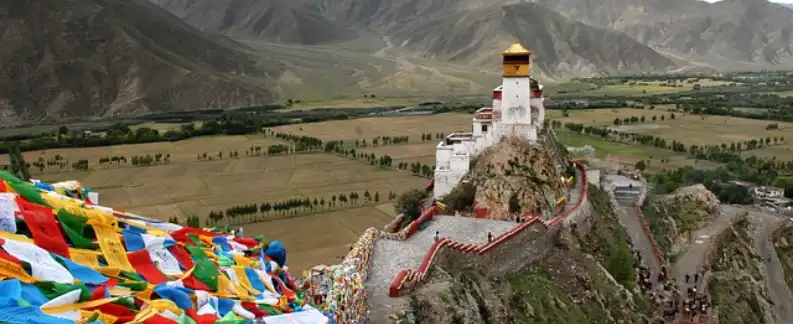
Breakfast at Hotel
After breakfast, visit Jokhang Temple, Barkhor Market and Sera Monastery.
Jokhang Temple: This temple is a seventh-century geomantic temple at the heart of Lhasa and is the most sacred temple of all Tibet. It is considered to be a Power Place in all of Tibet. Queen Bhrikuti, a Nepalese princess married to King Songtsen Gampo founded Jokhang Temple and in recognition of Queen Bhrikuti the main gate of the temple faces west towards Nepal. The most impressive structure of the Jokhang Temple is the many chapels surrounding the temple.
Barkhor Market (Bazaar): The most popular Barkhor Market (Bazaar) is a square where Tibetan handicraft items, Buddhist artifacts, carpets, paintings etc. are all on sale for your delight. At the end of the day your guide will escort you back to your hotel. Lhasa offers a variety of restaurants for both Lunch and Dinners.
Sera Monastery: This monastery is approx. 5km drive away from Lhasa. Sera Monastery was founded in 1419. It sits in the prettiest and most charming atmosphere at the base of Mount Purbuchok. Sera Monastery used to be an important center for learning where in the past approx. 5,000 to 6,000 monks resided. Currently about 550 monks are supposed to be living there. The important structures inside the monastery include Coqen Hall, (the main assembly hall), three Zhacangs (Buddhist colleges) and twenty-nine Khangtsens (monk dormitories).The most intriguing feature here is the nine-meter image of Maitraya which was erected in 1419; here one can also witness the practicing of debate among the monks, who pitch their knowledge against each other.
Overnight at Hotel Golden Grain
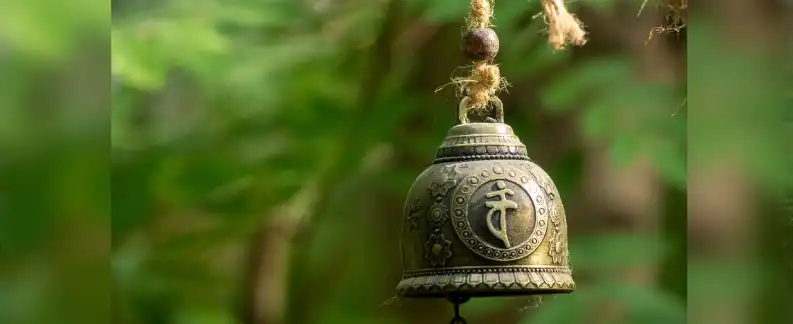
Breakfast at Hotel
After breakfast, visit Potala Palace and Drepung Monastery.
Potala Palace: This Palace is also known as the “winter palace”. The imposing structure of the palace dominates the landscape of Lhasa. It is a 13th storied complex monument rising to a height of above 117m which houses 10,000 shrines and over 200,000 images and about 1000 rooms.As you are guided through the ancient chambers of the palace, you get to see Tibetan art at its best. The Potala Palace has a vast array of intricate Tibetan murals and beautiful statues. You will also get to view the tombs of the eight Dalai Lamas. Due to traffic, only one hour is allowed to visit Potala Palace.
Drepung Monastery: This Monastery is 8 km west of Lhasa. One of the three great Gelukpa Monasteries near Lhasa, the other two being Sera and Ganden. Until the occupation it served like its two sister monasteries as a centre for learning and monastic training to which monks from all over Tibet would come to spend as long as 15 years methodically studying and debating the meaning of the Buddhist scriptures. For centuries it existed as a small monastic township housing thousands of fully ordained monks and other functionaries. It was founded in 1416 by Jam yang Chöje Tahsi Palden, a disciple of Tsong Khapa.
Overnight at Hotel Golden Grain
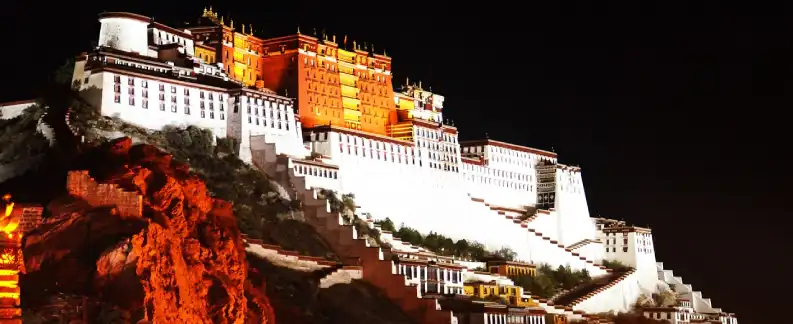
Breakfast at Hotel
After breakfast, drive to one of the beautiful lakes and fresh water in Tibet, Yamdrok Lake. It is one of the three largest sacred lakes in Tibet. Yamdrok Lake is also known as Yamdrok Yumtso or Yamzho Yumco. We will drive over two spectacular high passes – the Kampa La at 4750m and Karo La at 5010m, over, and along the beautiful deep blue green Lake called Yamdrok Lake or Turquoise Lake. The lake is surrounded by many snow-capped mountains and is fed by numerous small streams. The lake has an outlet stream at its far western and mean turquoise in English due to its colour. Yamdrok Lake is the transformation of a goddess. You can take a lot of beautiful pictures of Lake.
You can also take pictures of Lake with the beautiful Tibetan mastiff and Yak by paying a certain fee. Later you drive back to Lhasa.
Overnight at Hotel Golden Grain
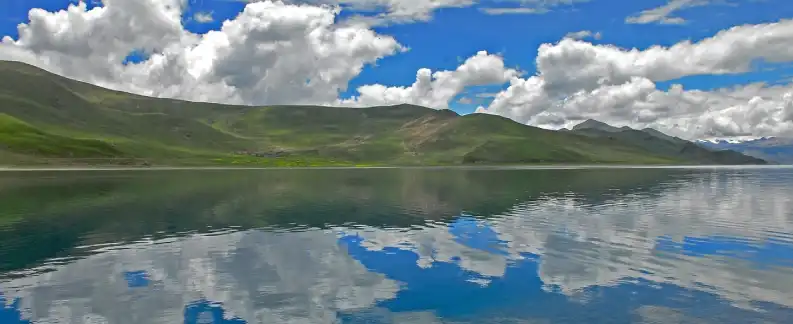
Breakfast at Hotel
After breakfast, transfer to the airport to connect flight to Kathmandu by Situan Air Or Air China. Upon arrival, our representative will meet, assist and transfer to the hotel.
Later, visit Pashupatinath Temple and Boudhanath Stupa.
Pashupatinath Temple: The Pashupatinath Temple is the oldest Hindu temple in Kathmandu. It is one of the sacred Hindu temple complexes located on the banks of the Bagmati River. It is not known when the Pashupatinath Temple was built. But according to Nepal Mahatmaya and Himvatkhanda, the deity here gained great fame there as Pashupati, the Lord of all Pashus (Animal), who are living and non-living beings. The existence of the Pashupatinath Temple dates back to 400 BC. C., the richly ornamented pagoda houses the sacred linga or the sacred symbol of Lord Shiva. There are many legends describing how the Pashupatinath temple arose here.
Boudhanath Stupa: It was built by King Lichchhavi Mana Dev in the 5th century AD. C. Boudhanath is also called Khasti Chaitya in Kathmandu. The huge mandala of the stupa makes it one of the largest spherical stupas in Nepal with lots of positive energy. From its whitewashed dome to its gilded tower painted with the all-seeing eyes of the Buddha, the monument is perfectly proportioned. Pilgrims do koras (circumambulations) in the morning and in the afternoon in search of luck, peace and prosperity for all beings that live in this world.
Overnight at Hotel Radisson
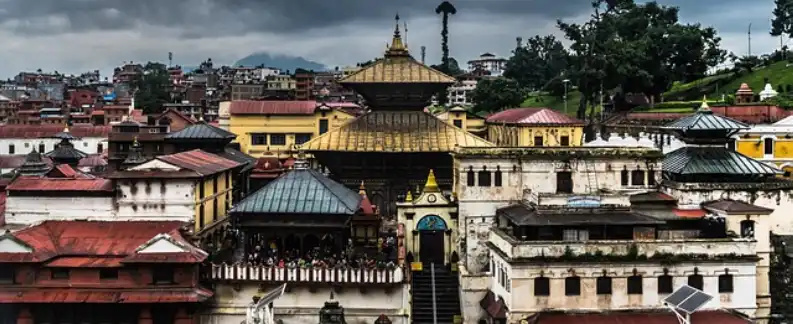
Breakfast at Hotel
After breakfast, proceed for the tour of Bhaktapur Durbar Square and later visit Nagarkot for day excursion/overnight stay.
Bhaktapur Durbar Square: It is an ancient capital of Kathmandu valley and was founded by King Yakshya Malla in the 14th century. It was the trade route to Tibet. It is considered as a museum of medieval art and architecture with many examples of sculpture, woodcarving and colossal pagoda temples. The main attractions are Royal Palace (fifty-five windowed), Golden Gate, Nyatapola Temple, statue of King Bhupatindra Malla, Dattatraya Temple, Bhairabnath Temple, Peacock Window etc.
Nagarkot: Nagarkot is located 32 Km. east of Kathmandu (2,099 metres, 6,886 feet), away from the noise and traffic of the city. It is famous for its view of the Himalayas, stretching from Dhaulagiri in the west and from Everest to Kanchenjunga in the east. It is the best Himalayan viewpoint at a short distance from anywhere in the Kathmandu valley.
Evening, Sunset Viewing.
Overnight at Hotel Club Himalaya
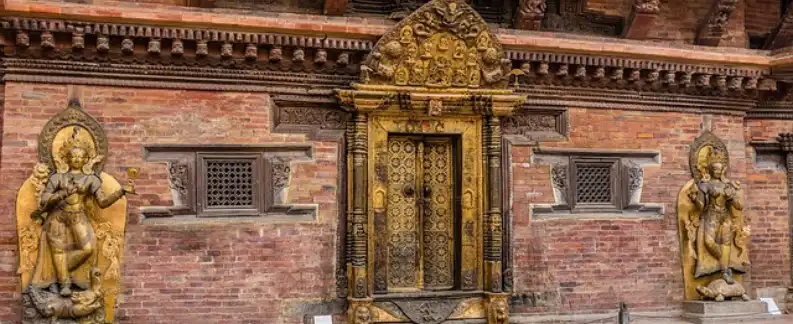
Early morning, Sunrise Viewing
Breakfast at Resort
After breakfast, visit Dhulikhel, Namo Buddha and Panauti Village.
Dhulikhel: This is a small Hill station mostly lived by the Newar ethnic group and is located 30 km. 80 southeast of Kathmandu next to the Araniko road that leads to the Tibetan border. It was once the capital of a fourteenth-century kingdom that boasted diplomatic relations with the Ming emperors of China. It was also an important trading post for Tibet and China. Dhulikhel is popular for its natural beauty and ancient tradition. The Himalayan ranges from Karyolung in the east to Himalchuli in the west can be clearly seen.
Namo Buddha: Namo Buddha is the Buddhist pilgrimage site located 40 km west of Kathmandu. According to legend around 6000 years ago, the king , Ngingdui Tshenpo, found a tigress lying near a rock at the top of the hill. The realized that she was going to die. Her five babies were still little and their survival depended on their mother. Ngingdui Tshenpo, was a young man who had his own kingdom but he decided to give his life to the tigress in a bust of love and compassion. After the tigress ate the king, the villagers brought his remains back in the village and buried in a tomb which later became the actual stupa of Namo Buddha. Some 3500 years later, the Gautam Buddha came to the village and he went around the Stupa three times. Then he declared that he was the reincarnation of King Ngingdui Tshenpo. It was at that moment that Gautam Buddha renamed this village and henceforth the name of Namo Buddha which means First Buddha.
Panauti: Panauti is a beautiful town (the oldest town in Nepal) is located 32 km, southwest of Kathmandu. It is surrounded by lush green hills rich in a wide variety of flowers and fauna. The forest around Panauti is home to a rich number of birds and animals. Panauti is a quaint and interesting destination of Nepal. It feels as if it has been left exactly the way the founders had built the town. A nostalgic atmosphere covers the narrow town streets and ancient structures.
Overnight at Hotel Radisson
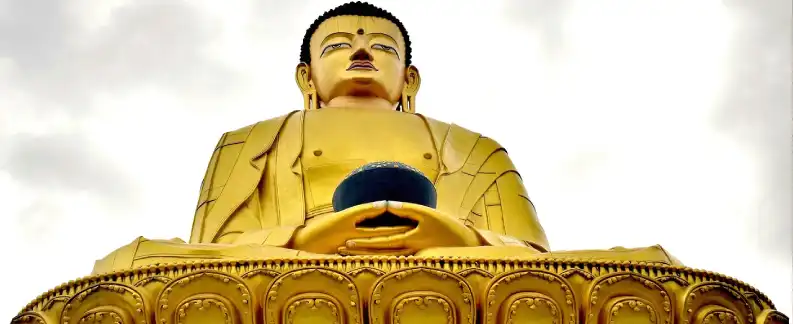
Copyright © 2016 - 2023, Trinetra Tours Pvt Ltd. Powered By DigiLantern

